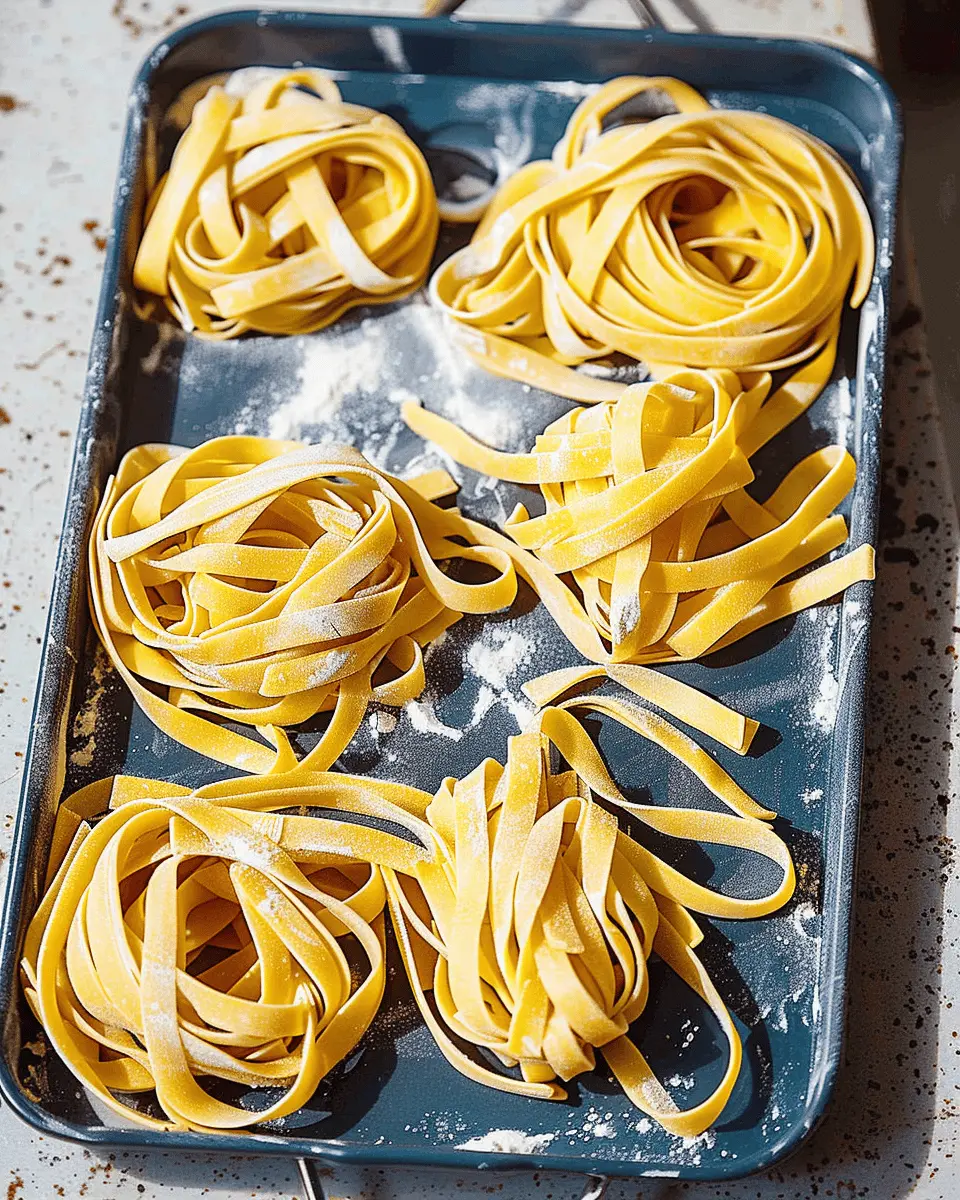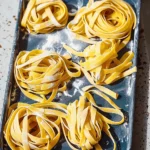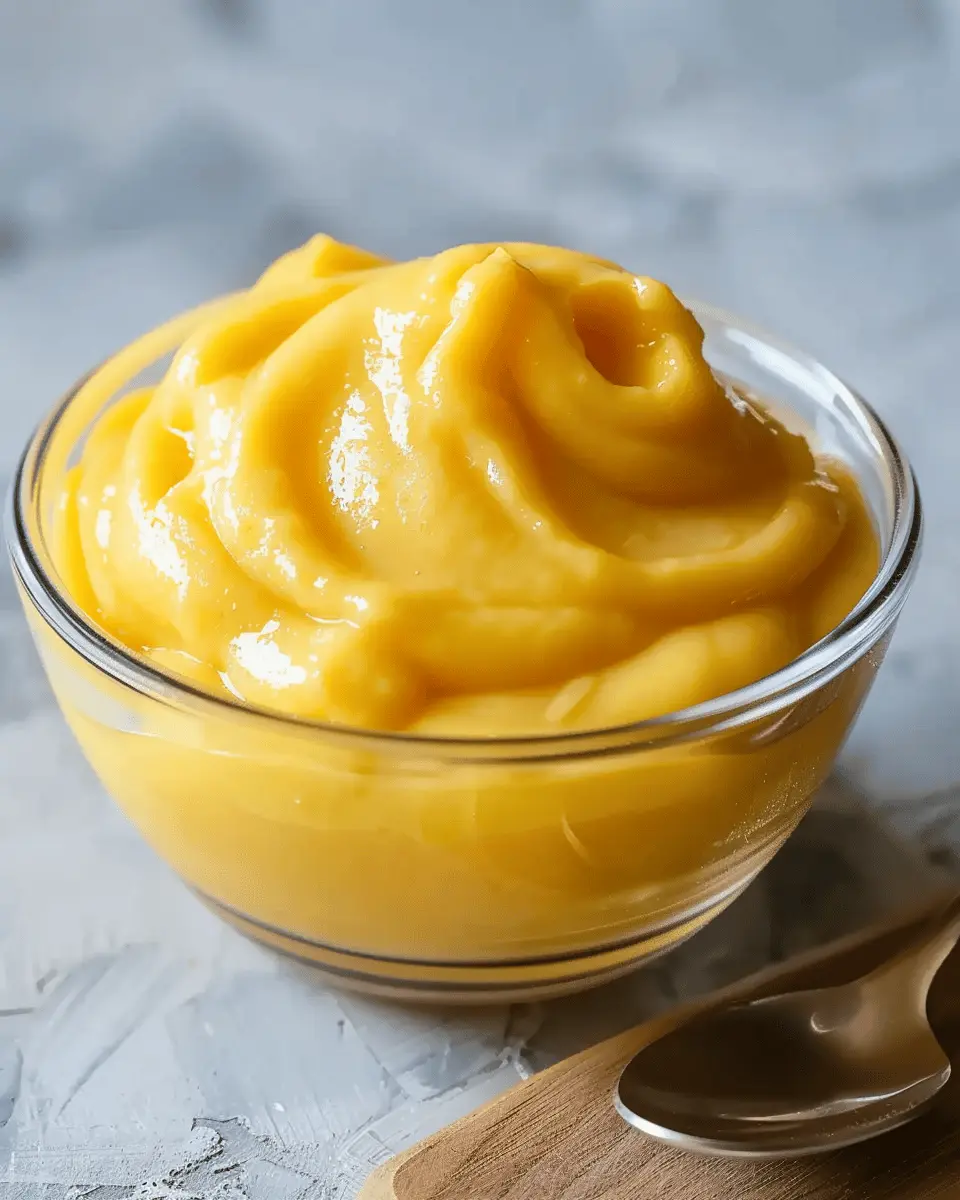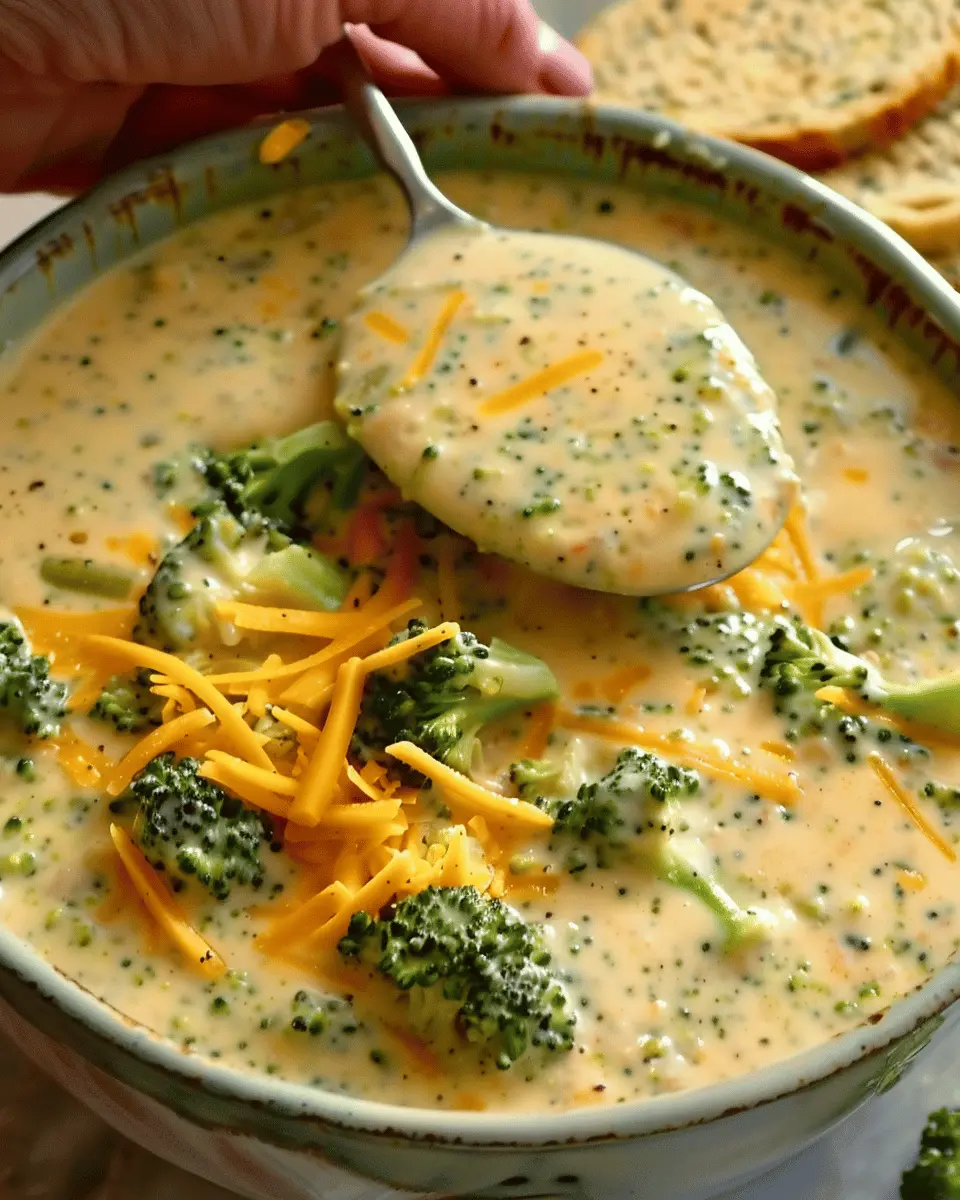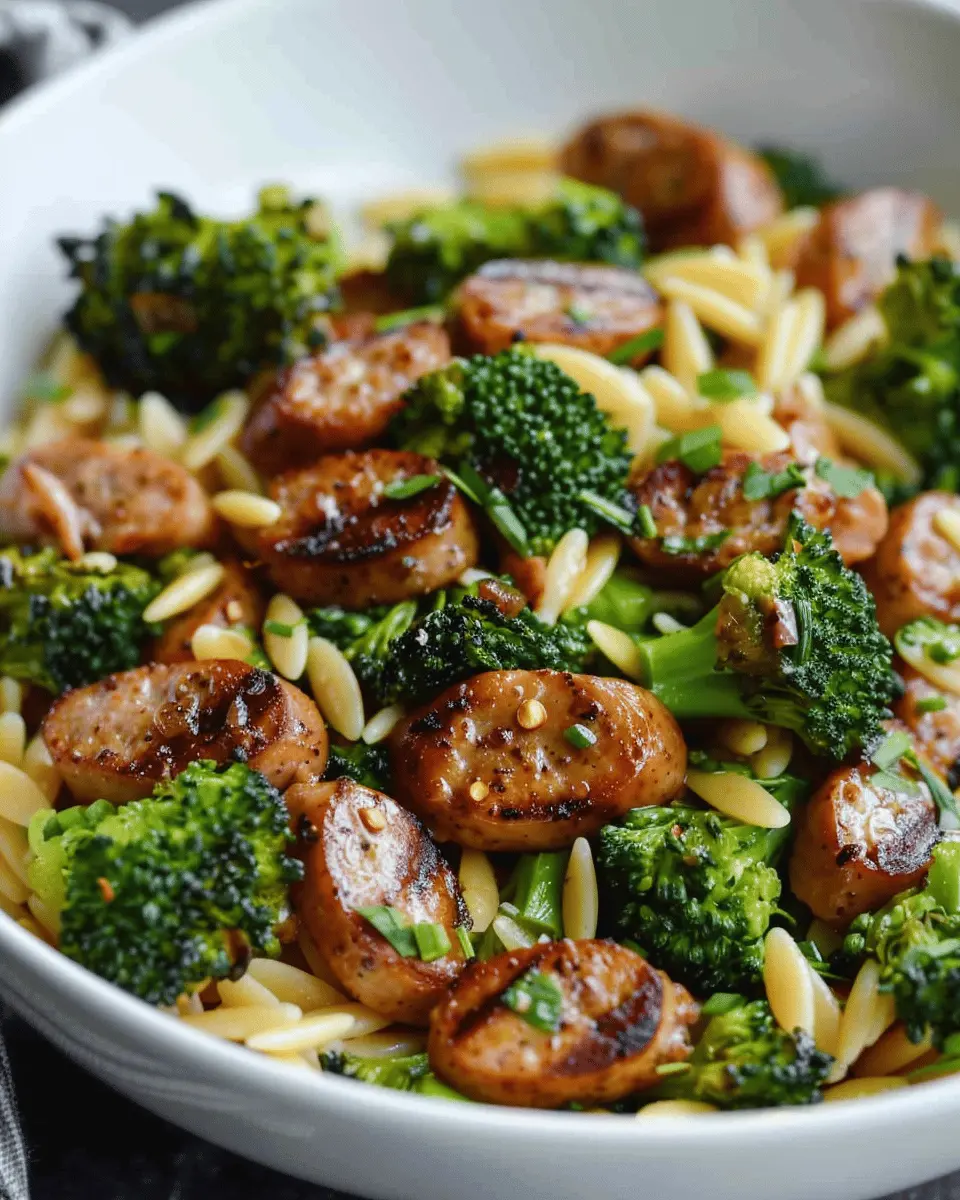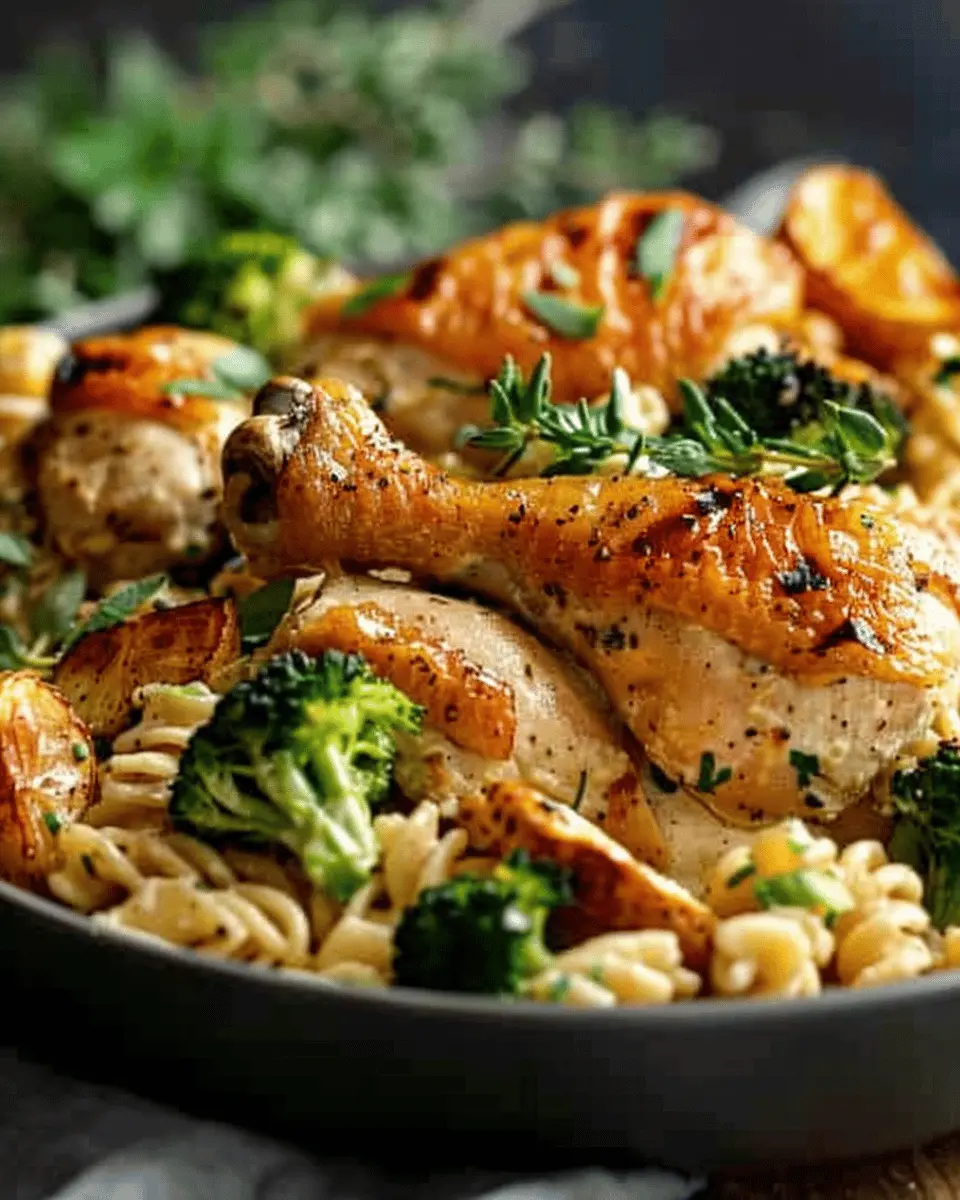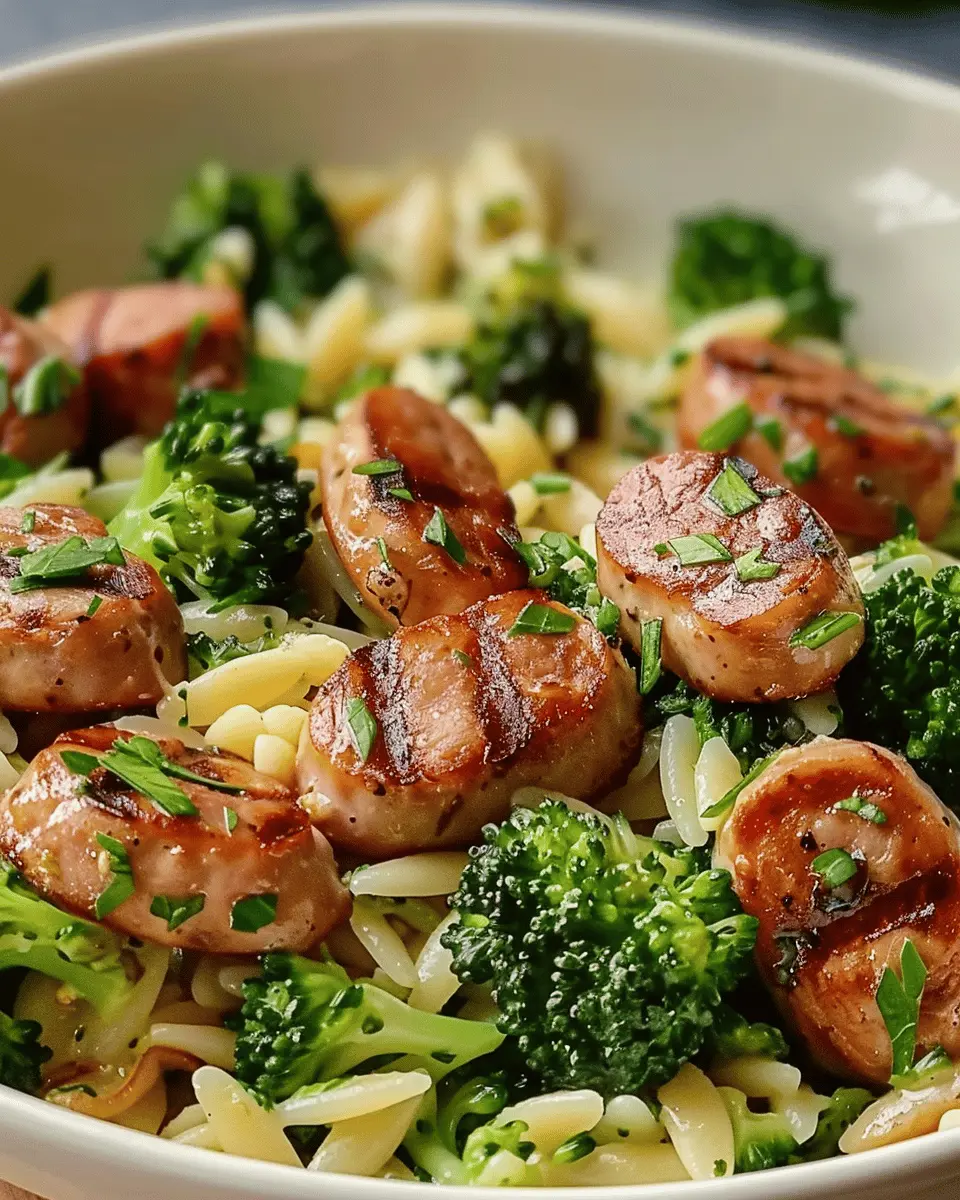Introduction to Homemade Pasta
There’s something extraordinarily satisfying about making your own pasta from scratch. Sure, it takes a bit more time than boiling water and tearing open a bag, but the freshness and flavor of homemade pasta elevate any dish beyond the ordinary. When you venture into the world of homemade pasta, you’re not just cooking—you’re crafting a culinary experience that brings joy to your kitchen and your table.
Why Homemade Pasta Deserves a Place in Your Kitchen
First and foremost, let’s talk about flavor. Homemade pasta soaks up sauces like a sponge, delivering a delightful richness that store-bought options can’t match. Did you know that fresh pasta can have a tenderness that gives your mouth a marvelous experience? According to culinary experts at Saveur, nothing quite compares to the taste and texture of homemade pasta, which can elevate a simple tomato sauce into an unforgettable dish.
Moreover, making your own pasta gives you full control over the ingredients. Choosing organic flours or experimenting with spinach or beet puree can not only enhance flavor but also boost nutritional value. Imagine whipping up a colorful plate of spinach fettuccine or using whole wheat for added fiber—how many store-bought noodles can compete with that?
Let’s also factor in the romance of the process. Rolling out dough, cutting your shapes, and even the flour dusting your countertops can create a joyful atmosphere in your kitchen. It’s a tactile process that can be both meditative and rewarding, making it an ideal activity for a cozy weekend afternoon or a fun dinner party with friends.
Plus, making homemade pasta can be a great conversation starter. Picture this: you serve a plate of your own handmade tagliatelle at a dinner with friends. Your guests are impressed, engaged, and captivated by the thoughtfulness that went into the dish. If you’re looking for a way to impress and inspire, this is it.
In short, homemade pasta is not just a meal; it’s a celebration of flavor, creativity, and the simple joy of cooking. Ready to roll some dough? Let’s dive in!
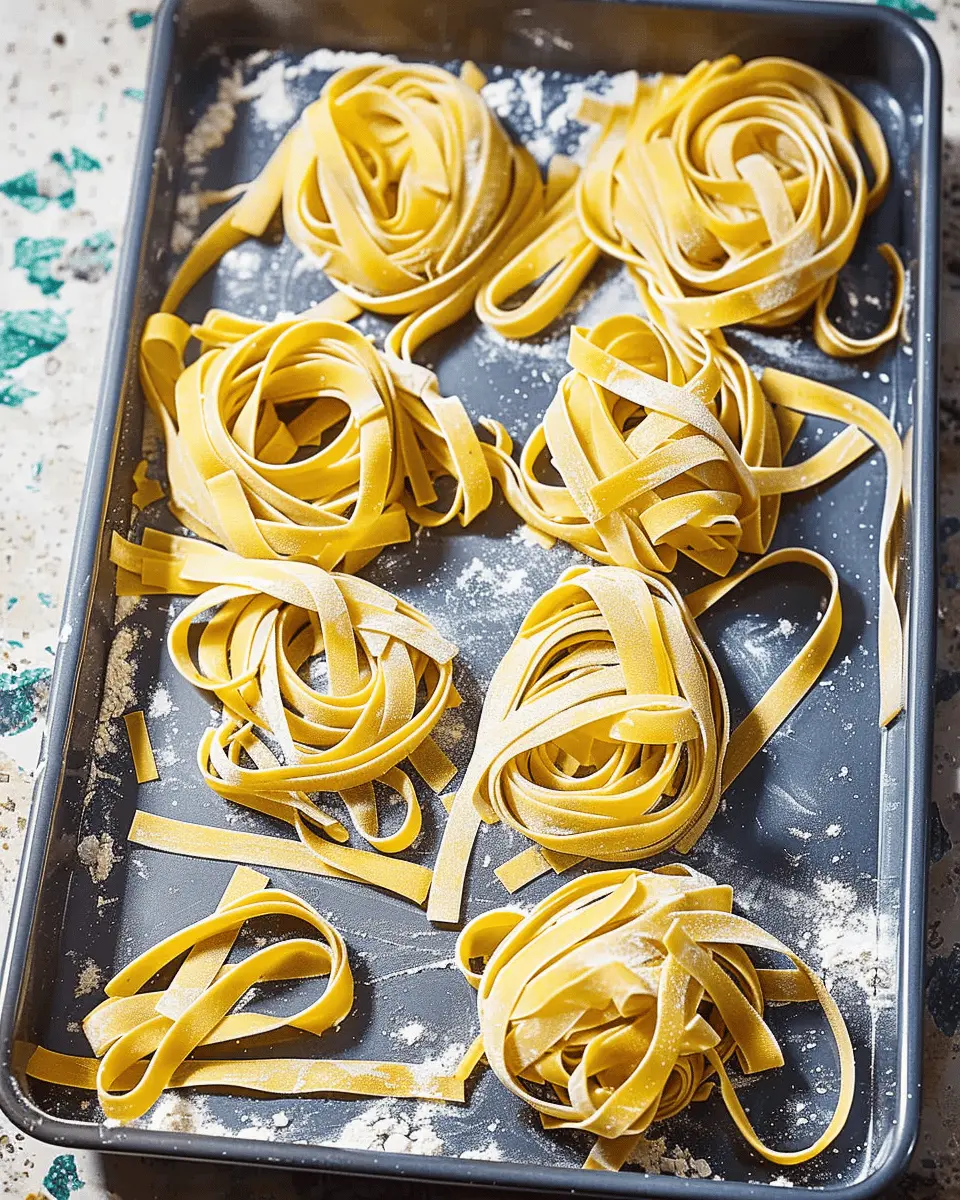
Essential Ingredients for Homemade Pasta
Creating homemade pasta is a delightful culinary adventure that begins with a few key ingredients from your kitchen. Let’s dive into what you’ll need to bring your pasta dreams to life!
The pantry staples you need
To make delicious homemade pasta, you’ll need:
- All-purpose flour: 00 flour is traditional but all-purpose works great.
- Eggs: Large, free-range eggs are best for flavor and richness.
- Salt: A pinch for the dough and extra for boiling water helps enhance flavor.
These staples create the perfect base, offering that chewy texture we all adore.
Fresh vs. dried ingredients
While the essence of homemade pasta lies in freshly made dough, consider supplementing with dried herbs or spices for added flavor. Fresh basil or rosemary can elevate your dish, while store-bought garlic powder can save time. Did you know that, according to the Italian Academy of Cuisine, fresh pasta is typically softer? This highlights why opting for fresh ingredients, when possible, can make a substantial difference in your final dish.
Want to dive deeper? Check out resources like Serious Eats for expert pasta-making tips!
Step-by-Step Preparation of Homemade Pasta
Making homemade pasta is not just a culinary accomplishment; it’s a delightful experience that connects you with Italy’s rich food traditions. Whether you’re planning a cozy dinner for two or a festive gathering with friends, the satisfaction of crafting pasta from scratch elevates any meal. Let’s dive into the step-by-step process of creating your own fresh pasta right from your kitchen.
Gather your ingredients
First things first: let’s assemble our ingredient lineup. For basic pasta dough, you’ll need:
- 2 cups all-purpose flour or “00” flour (the latter gives that silky texture)
- 3 large eggs (room temperature is best)
- A pinch of salt (to enhance flavor)
- A drizzle of olive oil (optional, but it adds richness)
Pro tip: Invest in quality flour! It makes a world of difference in texture and taste. You can even check this guide on pasta flour types to find what suits your dish best.
Create the dough
Once your ingredients are ready and waiting, it’s time to create that glorious dough. On a clean surface or in a large mixing bowl, mound your flour and make a well in the center. Crack the eggs right into that well and sprinkle with salt. With a fork, gently beat the eggs, gradually incorporating the flour from the edges. It might get messy, but that’s part of the fun!
If you prefer a more visual guide, here’s a video tutorial of the process that captures all the nuances beautifully.
Knead the dough to perfection
Now that all your ingredients are combined, it’s time for some serious kneading. Transfer the dough to a lightly floured surface and start kneading for about 8-10 minutes. You’re looking for a smooth and elastic texture. If the dough feels too sticky, sprinkle a bit more flour.
A good knead not only binds your ingredients but also develops the gluten, which is essential for that delightful bite in your homemade pasta.
Resting period for the dough
After kneading, wrap your dough in plastic wrap or cover it with a towel. Let it rest for at least 30 minutes. This step is crucial as it allows the gluten to relax, making the dough easier to roll out later. While you wait, you could prepare a delicious sauce, like a rich marinara or a creamy alfredo, to complement your pasta!
Roll out the pasta
With your dough nicely rested, it’s time to roll it out. If you have a pasta machine, fantastic! If not, a rolling pin works just as well. Divide the dough into smaller pieces (a quarter at a time works great) and then flatten each piece slightly.
Roll through your pasta machine on the widest setting, gradually narrowing it to achieve your desired thickness, usually around 1 mm. Aim for a consistent thickness, as this ensures even cooking.
Cut your pasta into desired shapes
Now comes the fun part—cutting your pasta! You can choose to cut your pasta into long strips for fettuccine, wide sheets for lasagna, or even use a pastry cutter to create shapes like farfalle.
For fettuccine, dust the rolled pasta with a little flour, fold it over, and slice into strips about ¼ inch wide. Toss with a little extra flour to keep the noodles from sticking together.
Cooking the fresh pasta
Once you’ve shaped your homemade pasta, it’s time to get it cooking! Bring a large pot of salted water to a boil. Fresh pasta cooks quickly—usually in about 2-4 minutes—so keep an eye on it. It’s done when it floats and has a tender bite.
Whenever possible, serve your pasta immediately with your sauce of choice, garnished with fresh herbs or cheese for added flavor.
And there you have it! With patience and a little practice, you’ll master the art of homemade pasta—and impress your friends and family with your culinary prowess!
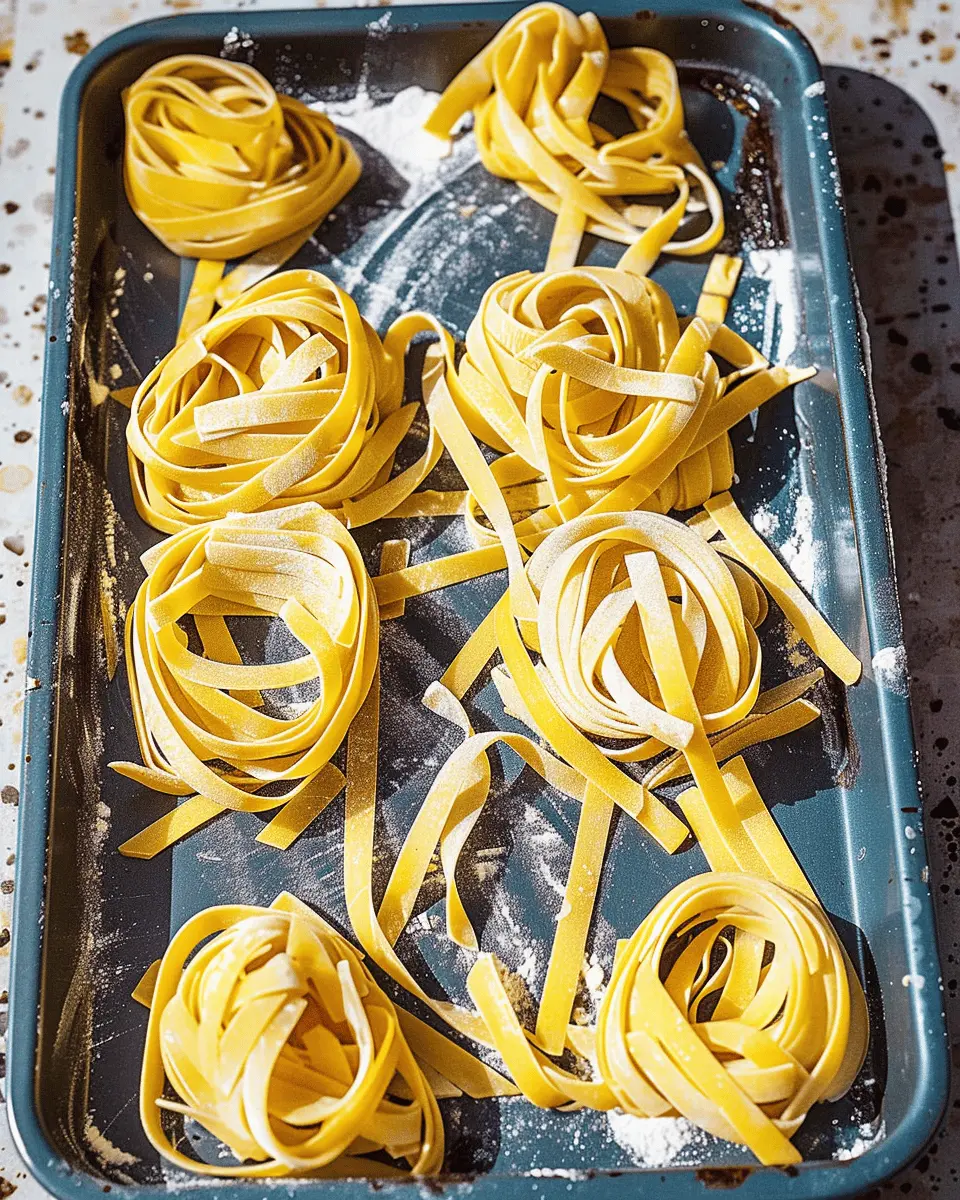
Creative Variations of Homemade Pasta
Exploring different variations of homemade pasta can turn a simple meal into a culinary adventure. Here are a few creative options that not only add flair but also deliver unique flavors.
Spinach-Infused Pasta
Why not sneak some greens into your pasta? Spinach-infused pasta is vibrant and a great way to boost your veggie intake. To make it, blend fresh spinach with your eggs and flour during mixing. This not only adds a beautiful green hue but also brings a delightful flavor. Use your spinach pasta for fettuccine or lasagna, and watch as it impresses your friends and family. If you’re curious about the nutritional benefits of spinach, check out this Nutritional Benefits of Spinach.
Tomato Basil Pasta
For a burst of flavor, consider tomato basil pasta. Incorporating tomato paste and fresh basil into your dough gives it a rich color and distinctive taste. Simply add about 1/4 cup of quality tomato paste to your ingredients along with a handful of finely chopped basil. This pasta pairs wonderfully with lighter sauces or even just a drizzle of olive oil and grated cheese. It’s perfect for summer, reminding you of open-air markets and warm evenings.
Whole Wheat Pasta Options
If you’re looking for a healthier twist on your traditional homemade pasta, don’t overlook whole wheat. Utilizing whole wheat flour not only enhances the taste but also adds fiber, making your meals more nutritious. You can easily substitute half or all of your all-purpose flour with whole wheat flour. Who knew being health-conscious could be so delicious?
Experimenting with these variations can make the experience of crafting homemade pasta exciting and fun. Cooking is all about creativity—so don’t be afraid to play around with flavors and ingredients!
Helpful Cooking Tips for Homemade Pasta
Making homemade pasta can seem daunting, but with a few simple tips, you can nail it every time.
Common Pitfalls and How to Avoid Them
One common mistake is using too much flour during rolling. Avoid this by using just enough to prevent sticking—your dough should feel silky, not grainy. Another frequent issue is under-kneading; aim for a dough that’s smooth and elastic. Remember, if it’s too dry, add a splash of water, and if it’s too wet, sprinkle in a bit more flour. For further insights on dough consistency, you might check out this comprehensive guide on pasta-making techniques.
Equipment Recommendations for Pasta Making
To create perfect homemade pasta, consider investing in the following tools:
- Rolling Pin: Ideal for thin sheets and more control than a pasta machine.
- Pasta Cutter or Wheel: For clean, even edges.
- Pasta Machine: A great investment for consistent thickness. Brands like Marcato are highly recommended.
- Drying Rack: Helps prevent sticking as your pasta dries.
Experiment with these tools to find what works best for you; the right equipment can make a world of difference. Happy cooking!
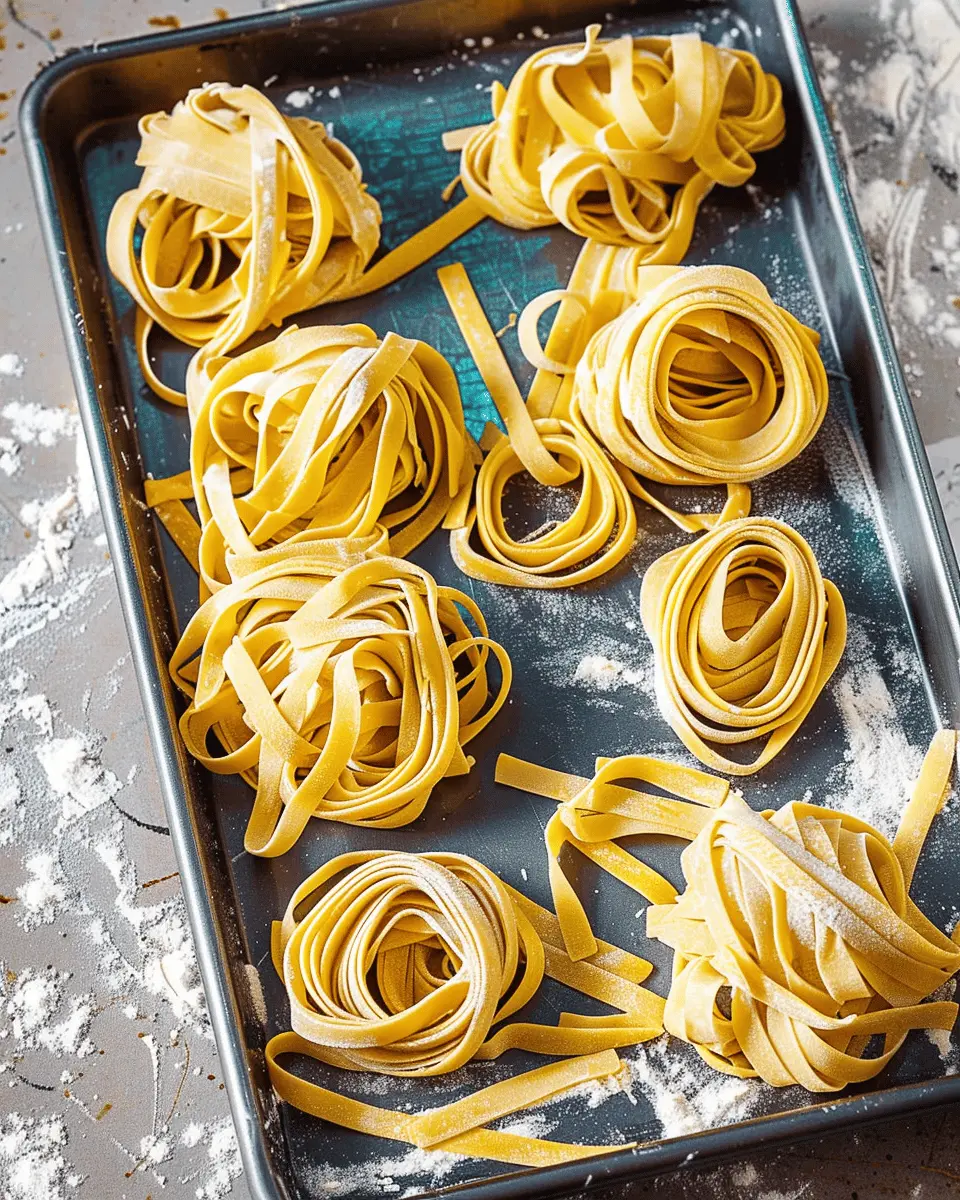
Serving Suggestions for Homemade Pasta
Sauces that Complement Homemade Pasta
Ah, the magic of homemade pasta shines when paired with the right sauces! Think beyond traditional marinara; consider these delightful options:
- Alfredo Sauce: Creamy and indulgent, it’s perfect for fettuccine.
- Pesto: Fresh basil, garlic, and pine nuts create a lively topping.
- Bolognese: A rich meat sauce that envelops your pasta in flavor.
For a deeper dive into sauces, you can check out this resource that breaks down the best combinations.
Pairing with Proteins and Veggies
Now, let’s talk about what else you can add to elevate your homemade pasta experience.
- Proteins: Chicken, shrimp, or even sautéed mushrooms provide satisfying textures.
- Veggies: Consider roasted cherry tomatoes, wilted spinach, or zucchini ribbons for a pop of color and nutrition.
Don’t be afraid to experiment! Mixing your favorite ingredients can create a dish that’s uniquely yours. Have you tried adding a hint of lemon zest or sprinkling some parmesan on top? It’s these small touches that can turn a good meal into a great one.
What’s your favorite way to serve pasta?
Time Breakdown for Homemade Pasta
Preparation Time
Making homemade pasta is a delightful project that starts with about 30 minutes of preparation. This includes gathering your ingredients—think flour, eggs, and a pinch of salt—and getting ready to mix or knead your dough. Don’t rush! Taking your time ensures a smooth, consistent texture.
Cooking Time
Once your pasta is shaped and ready to go, you’ll need around 4-5 minutes for cooking. Fresh pasta cooks much quicker than dried varieties, so keep an eye on it! A well-timed check will ensure your pasta is perfectly al dente, just the way you want.
Total Time
In total, you’re looking at roughly 35-40 minutes from start to finish. For a detailed guide, check out resources on pasta-making techniques. Think it’s a lot of work? Well, the rewarding experience and taste of homemade pasta make every minute worthwhile! You might even want to experiment with different shapes and sauces—there’s so much potential for creativity here.
Nutritional Facts for Homemade Pasta
When you whip up a batch of homemade pasta, it’s not just about the taste—it’s also important to consider its nutritional profile.
Calories
Homemade pasta typically contains around 200 calories per serving. This can vary based on the ingredients you use, especially if you opt for enriched flour or add eggs.
Carbohydrates
Carbs are a major player in homemade pasta, providing around 40-45 grams per serving. They are essential for energy, so if you’re planning a busy day or an intense workout, your pasta dish can definitely be a friend.
Protein
You might be surprised to learn that a serving of homemade pasta can offer about 7-10 grams of protein, especially if you include eggs in your recipe. For those looking to boost their protein intake, pairing your pasta with legumes or lean meats can create a well-rounded meal.
For a deeper dive into nutrition, check out The USDA Food Data Central for more details on ingredient specifics!
FAQs about Homemade Pasta
Can I make homemade pasta without a machine?
Absolutely! Making homemade pasta without a machine is not only possible but can also be quite rewarding. You can use a rolling pin and a sharp knife to roll out and cut your dough. Just make sure to take your time and keep the dough floured to prevent sticking. Many chefs actually prefer this hands-on approach, as it connects them more intimately with the cooking process.
For more tips on making pasta by hand, check out this informative guide from Serious Eats. They cover various techniques and also provide some delicious recipes!
How long does homemade pasta last?
Fresh homemade pasta is best enjoyed the same day you make it, but if you’re preparing it in advance, you can store it. If kept covered in the refrigerator, fresh pasta will last about two days. For longer storage, you might notice a quality drop, but it can remain good for up to a week.
It’s essential to keep it dry and well-wrapped to avoid any unwanted moisture. If you’re curious about best practices for storing pasta, you might find Food Network’s pasta storage tips helpful.
Can I freeze homemade pasta?
Yes, indeed! Freezing your homemade pasta is a great way to enjoy it later without compromising taste. To do this, let your pasta dry for about 30 minutes on a floured surface. Then, arrange it in small portions on a baking sheet and freeze until solid. After that, you can transfer the pasta to a freezer bag and store it for up to three months.
When you’re ready to cook it, there’s no need to thaw—just drop it straight into boiling water for a few extra minutes. Easy-peasy!
Conclusion on Homemade Pasta
The joy of crafting your own pasta at home
There’s something heartwarming about creating homemade pasta from scratch. Not only does it allow you to customize flavors and shapes, but the process itself can be a delightful bonding experience with friends or family. Imagine rolling out the dough together, laughter filling the kitchen, and the aroma of freshly cooked pasta wafting through your home.
When you make your own pasta, you’re not just preparing a meal; you’re cultivating a skill that connects you to culinary traditions. Plus, studies show that hands-on cooking can enhance mindfulness and reduce stress. So why not start your pasta-making journey today? For more tips on perfecting your technique, check out The Pasta Project!
PrintHomemade Pasta Bliss: Easy Recipe for Irresistible Flavor
Learn how to make delicious homemade pasta with this easy recipe that guarantees irresistible flavor.
- Prep Time: 30 minutes
- Cook Time: 5 minutes
- Total Time: 35 minutes
- Yield: 4 servings 1x
- Category: Pasta
- Method: Boiling
- Cuisine: Italian
- Diet: Vegetarian
Ingredients
- 2 cups all-purpose flour
- 3 large eggs
- 1/2 teaspoon salt
- 1 tablespoon olive oil
Instructions
- Place the flour on a clean surface or in a large bowl. Make a well in the center.
- Crack the eggs into the well and add salt and olive oil.
- Using a fork, beat the eggs gently and gradually incorporate the flour, starting from the inner rim of the well.
- Once the dough starts to come together, use your hands to knead it until smooth and elastic, about 8-10 minutes.
- Wrap the dough in plastic wrap and let it rest for 30 minutes.
- After resting, roll the dough out to your desired thickness and cut into shapes.
- Cook the pasta in boiling salted water for 2-4 minutes until al dente.
Notes
- For extra flavor, you can add herbs to the dough.
- Use a pasta machine for even, thin sheets.
Nutrition
- Serving Size: 1 serving
- Calories: 220
- Sugar: 0g
- Sodium: 160mg
- Fat: 5g
- Saturated Fat: 1g
- Unsaturated Fat: 3g
- Trans Fat: 0g
- Carbohydrates: 40g
- Fiber: 2g
- Protein: 8g
- Cholesterol: 100mg
Keywords: Homemade Pasta, Pasta Recipe, Italian Cooking

